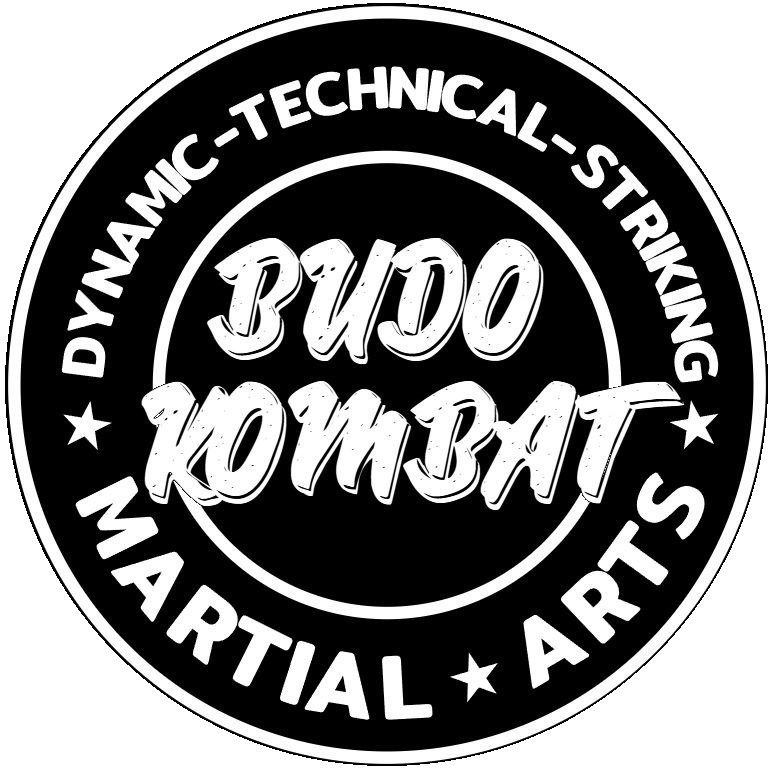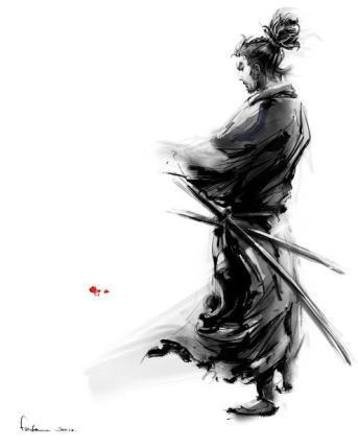
What is
Budo Kombat / Kamae
About Budo Kombat:
An approach to Technical Kickboxing, the foundational roots of Budo Kombat are in that of traditional (old-school) Karate-Do, emphasizing a concerted focus on practical techniques and methods adapted to the contemporary protocols of the established striking arts of Muay Thai, Western Boxing, as well as the wider dynamic striking arrangements existent in MMA (Mixed Martial Arts).
In this way, the Techniques in Budo Kombat primarily center around punches, kicks, elbows and knees, along with related defense applications and stances/footwork (covering movement, distance, balance, stability, range and effective weight distributions).
Core Approach:
The core approach of Budo Kombat practices are aligned with those found in long-established Okinawan and Japanese Martial Arts systems; some key concepts and focal points include:
Three K’s:
Kihon (Basics / Techniques)
Kata (Forms)
Kumite (Combative Simulation and Interactions)
‘SHU-HA-RI’ concept:
SHU: Learn the Rules (fundamentals, repetition)
HA: Bend the Rules (understanding, detachment, self-recognition)
RI: Break the Rules (transcendence, creativity, mastery)
Budo Kombat also aims to develop personal growth and the spirit of practitioners through defined BUDO principles , alongside the development of physical skills towards practical and competitive application relevant within established modern combat sports.
A Round Kick to the liver with the arm swung downwards for power.
- Focus on the Kinetic Chain
A depiction of Miyamoto Musashi, legendary Japanese Ronin Samurai, philosopher, strategist and writer. - Created by: Alex Faichan
Highlight Video
Budo Kombat sessions focus on Martial Arts exercises and practices, helping towards skill development, mental stimulation, improvements in health, strength & fitness, leading to the unleashing of your potential.
-
Include but are not limited to improvements and refinements in Focus, Confidence, Self-Assurance, Techniques, Strength, Flexibility, An Increase in Bodily Awareness, Coordination, Balance, Stability, Dexterity, and more.
BUDO:
: ‘Way of War’, or ‘Martial Path’; a fighting discipline whose aim is to promote the spiritual development of its practitioners :
(‘Kombat’ has been inspired by the Japanese word ‘Kamae’)
KAMAE (‘KOMBAT’):
: A Connected Readiness of Mental and Physical; associated with Combative Posture and Awareness:
The ‘Budo’
(in Budo Kombat):
Authentic Martial Art Traditions that have been maintained, along with respective Concepts, Methods and Approaches (eg. Stances, Techniques, Movements)
Gives attention to the Martial Art Mind and Spirit, and developing ones inner control, thereby enhancing ones ability to handle external change (the journey of the Spiritual Warrior is to combat the universal enemies, a major one of which is self-ignorance)
The enhancement of ones bodily awareness through conventional Movements, Forms and Techniques generally found in Kata
Personas and Depictions:
Sensei Gichin Funakoshi (founder of modern day Karate) performing a movement of Heiyan Yodan Kata. Can be viewed as an intermediary position for blocking followed by a trap and Hammerfist, also commonly found in Filipino Boxing.
Sensei Motobu Choki illustrating a movement of Naifanchi Kata which he favored heavily as ‘the fundamental of Karate’ with its applications (bunkai) relating to actual fights he experienced in brawls as a young man (given the Katas focus on generating power through twisting of the torsoe with ones back against a wall)
The ‘Kombat’ /Kamae
(in ‘Budo Kombat’):
Focuses more on an alert, and direct Combat Posture
Functional ‘Fighting/Combative’ positional states
Typically utilized in Kumite (Live Sparring) and Self-Defense
Common postures found in Western Boxing and Muay Thai, as illustrated by original ancient Okinawan masters of Karate-Do
Personas and Depictions:
Chibana Chosin, founder of Shorin-Ryu, in ‘Meotode kamae’ (translating to ‘husband and wife’ hand posture), a primary guard posture in old style Okinawan Karate
Sensei Motobu Choki also in ‘Meotode kamae’ posture
The guard posture of the bare-knuckle boxers of the old looks very similar to the original Japanese Okinawan Karate masters fighting stance (‘Meotode Kamae’).
Our Aim - Refined:
To position practitioners with foundational knowledge, technical skill (mental & physical) and prowess in multi-dimensional Martial Arts striking and related defense principles which can be built upon subsequently. This, along with developing fitness and character-building traits through Traditional Budo principles.
The curriculum of Budo Kombat focuses on universal foundational elements starting with stance/footwork (covering movement, distance, balance, stability, range), as most offensive and defensive combative scenarios and related technical applications start and end with the feet.
The target outcome through practice and attendance of Budo Kombat sessions is the enhancement of the practitioners abilities, fitness and character: to use martial arts as a self-development utility tool in many ways beyond the physical. The desire is for practitioners to learn to not only feel, move and function as a developing martial artist (defending and striking effectively), but also to expand and refine the mental and character faculties through principles of Traditional Okinawan & Japanese Martial Art Budo Principles (see Dojo Kun).
〰️






















